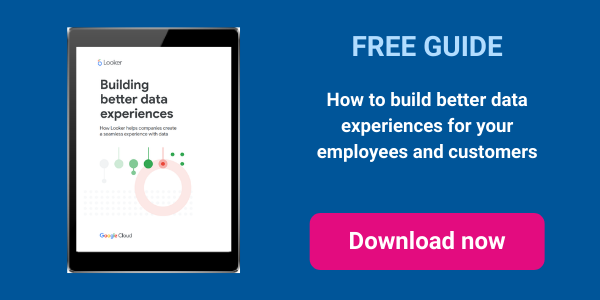Being able to personalise your website users’ and customers’ experiences on your website through accurate recommendations is one of the most powerful ways to build trust and drive revenue.
In fact, 45% of online shoppers are more likely to shop on an ecommerce site that provides personalised recommendations than one that doesn’t.
That’s because recommendations engines help to:
- Direct users to the products they want and need
- Improve basket size and average order value
- Recommend new and relevant content to users
- Build trustworthy relationships with your target audience
To do this effectively, you can use an automated process via a product recommendation engine, which dynamically provides recommended content or products to the user based on their previous behaviour.
How does a recommendation engine work?
A product recommendation engine works by serving suggested products to website visitors based on their previous behaviour or data you hold about them. For example, if you have a customer who has previously purchased a product, a recommendation engine can be used to serve similar or complementary products that they may also be interested in.
Recommendation engines can provide suggestions to first-time customers, too; like the ‘often bought together’ or ‘customers also buy’ recommendations you see across many ecommerce stores. This can help to increase basket size and improve average order values.
Moving away from ecommerce and sales, recommendation engines can also be used to serve relevant content to users, such as those who interact with other pieces or who fit a particular demographic or profile. Think about the way Netflix recommends new shows for you to try, based on what you’ve watched before.
What is the logic behind recommendation engines?
The logic behind this is that it encourages customers to purchase or to consume more content. But what’s impressive is the behind-the-scenes engineering that generates the recommendations delivered by the system.
The process depends on the collection and analysis of data that is used to understand behaviour and deliver appropriate recommendations. Here’s a four-step process which is typical of many recommendation engines:
- Data collection — either from explicit user actions (such as leaving reviews or comments) or implicit behaviour (like an order history or a previous interaction with a piece of content)
- Data storage — a database or location where the data you’ve collected is stored
- Data analysis — the recommendation engine uses one or more methods of analysis (such as batch analysis or real-time analysis) to discover patterns and items in the database with similar engagement behaviour
- Data filtering — the engine’s algorithm sorts and filters the data in order to present it back in a user-friendly recommendation seen by the end user
Which algorithms are used in recommender systems?
There are several algorithms that can be used in recommendation engines, depending on the desired output (i.e. whether you’re looking to recommend products or content to your users).
- Content-based filtering — where the engine understands previous content viewed by a user and recommends something similar. Check out this example to see how Ancoris client, Play Sports Network, delivers personalised content to its users.
- Collaborative filtering — whereby the engine detects common behaviour or preferences between entities and then makes recommendations by predicting what a user will like based on their similarities with other users.
- Hybrid filtering — using both content-based insight and collaborative filtering to provide more broad but accurate recommendations.
Are recommendation engines powered by AI?
Earlier recommendation engines could perhaps be described as primitive; often showing the same products or recommendations to all users, with a static delivery that could only be manually changed by a developer in the backend.
However, with the continued growth and capabilities of machine learning, artificial intelligence (AI) is now used to power many recommender systems. This is beneficial because it helps to provide more bespoke and relevant recommendations to users on a case-by-case basis, often processing data and behaviour at real-time (or extremely close to it) to dynamically present accurate recommendations.
Google AI and accurate recommendations
Google has long been using recommendation engines in its own content; from things like recommended videos on YouTube to tailored ads across its network of properties. With all that experience, and a heavy investment in machine learning and AI, Google technology is now able to be harnessed by website owners and developers to deliver accurate recommendations to users and customers.
The Google Cloud powered technology uses data from product catalogues and/or CRM systems, and filters it based on your preferences to deliver strategic and timely recommendations to users.
This is powerful for website owners and developers, as it allows them to provide more of what their ideal customers want, when they want it — which leads to higher customer satisfaction (as well as higher revenues, increased sales and better conversion rates for organisations).
Harness the power of recommendations with Ancoris CMOLab recommendation engine
Ancoris CMOLab Recommendation Engine is powered by Google Cloud, harnessing the power of Google’s machine learning capabilities to enable you to deliver powerful recommendations to your customers. The engine is fully bespoke and custom-built to your exact needs, meaning it’s a perfect fit for your business.
Developed to provide highly accurate consumer recommendations, leveraging the very latest in Google Cloud AI, and data analytics technology, Ancoris CMOLab easily connects to your existing eCommerce, ERP and content management systems. Once connected, recommendations are computed on a daily basis, and served to consumers via simple integration with your existing customer facing platforms.
Ready to delight your customers with powerful, accurate and relevant recommendations? Get in touch today and let’s explore how Ancoris CMOLab can bring your vision to life.


